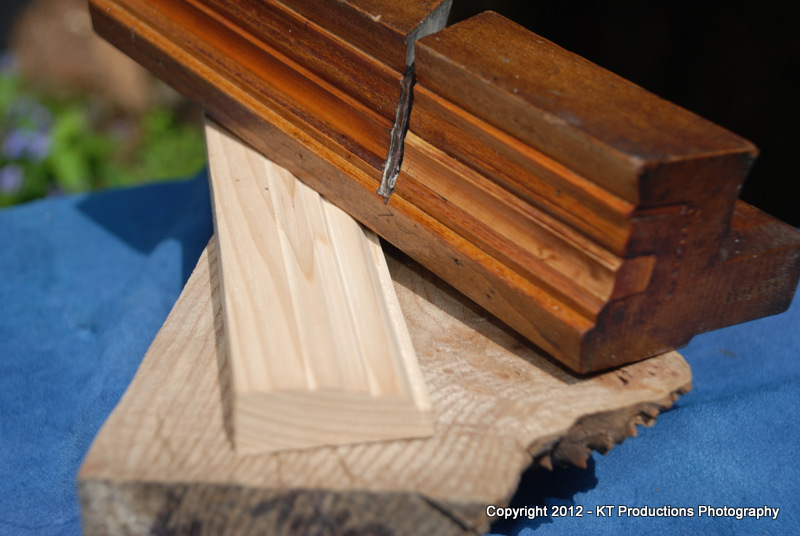richarnold
Established Member
There has been a bit of discussion lately about spring on moulding planes, so I popped out to the workshop this afternoon, and took some images of planes with, and without spring so folks could see the difference. A lot of early British moulding planes had no spring. This is possibly the earliest plane in my collection, and although there is no way of verifying it, it possibly dates from the middle of the 17th century. This plane has no spring, working the mould straight down so to speak. I thought it might be interesting to try it out, but it proved to be an absolute pig to work with, the mouth choked up with almost every pass. One unusual feature of this plane is that it has no built in stop so the mould continues to be cut for as long as you keep plaining.


The next plane also cuts with no spring. There is no makers mark, but stialistickly it possibly dates to around 1740.
Unlike the first plane, this one works with impecable manners, and i have used it before now to make a bolection mould for a paneled door.


Moving on now to a plane with spring. This is a complex moulder by John Rogers of London, 1734-1765. I hadn't got a protractor to hand, but you can see that the stock of the plane is held at a considerable angle to stick the mould. nearly all these planes have lines scribed into the toe to give you some indication as to what angle to hold them to.
The spring provides a couple of advantages over planes without this feature. I find it easier to keep the plane on track when you are providing a sideways pressure whilst sticking the mould, and from the plane makers point of view, they could use a narrower stock which saved them timber.
Please note that the wood is only held in the vice at that angle so i could take the photo!
For anyone who fancies trying out a moulding plane, I will be demonstrating at the next MAC open day at the end of July, so why not come along and have a go




The next plane also cuts with no spring. There is no makers mark, but stialistickly it possibly dates to around 1740.
Unlike the first plane, this one works with impecable manners, and i have used it before now to make a bolection mould for a paneled door.


Moving on now to a plane with spring. This is a complex moulder by John Rogers of London, 1734-1765. I hadn't got a protractor to hand, but you can see that the stock of the plane is held at a considerable angle to stick the mould. nearly all these planes have lines scribed into the toe to give you some indication as to what angle to hold them to.
The spring provides a couple of advantages over planes without this feature. I find it easier to keep the plane on track when you are providing a sideways pressure whilst sticking the mould, and from the plane makers point of view, they could use a narrower stock which saved them timber.
Please note that the wood is only held in the vice at that angle so i could take the photo!
For anyone who fancies trying out a moulding plane, I will be demonstrating at the next MAC open day at the end of July, so why not come along and have a go






